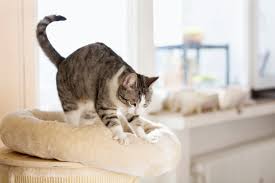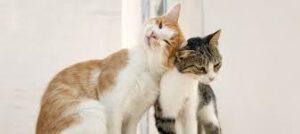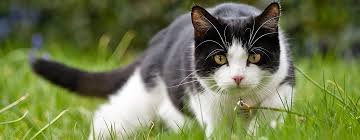I’m going to guide you through understanding cat behavior, a must-know for every cat owner. Think of it as becoming fluent in another language – Cat. It’s an adorable and complex means of expression that’s all about subtlety.
One of the biggest misconceptions is that cats are mysterious creatures. I’m here to help you see that’s not the case. They communicate a lot! It’s just a matter of learning their language. You’re going to find out about the multiple layers of communication that purring, meowing, tail wagging, and more signify.
You might already know that cats meow, but did you know they primarily use this vocalization to chat with us humans? That’s right. Whether it’s a demand for food, attention, or a simple ‘hello’, cats have figured out that meowing is the way to get our attention. And they don’t really meow at other cats. That’s a special dialogue reserved for their two-legged companions.
In my opinion, understanding these cues is crucial to strengthening the bond with your feline friend. So let’s debunk the mystery and discover the nuances of how cats communicate with their human families. And remember, this isn’t just about what your cat is saying; it’s also about deepening your relationship with your pet.
Navigating through the complexities of cat vocals leads us to the most common and puzzling of cat sounds: purring. It’s not always the straightforward expression of happiness that many believe. In the upcoming section, you’ll learn about the intricate world of purring and how it can signal a variety of emotional states.
The Purr-fect Indicator: Unraveling the Mystery of Cat Purring
I’m going to let you in on a secret: a cat’s purr is more than just a soothing soundtrack for cuddle time. While it often indicates contentment, purring can also be a cat’s way of keeping calm in the face of fear or even when feeling under the weather. So, how do we, as pet parents, start to decipher this feline Morse code?
That’s going to include tuning in to the context. You’re likely familiar with the soft vibrations emanating from your furry friend while sprawled out in your lap—this is the typical, content purr. However, if your cat is purring while tucked away in a hiding spot or after a scary encounter, they might be self-soothing, using those same vibrations to calm their nerves.
You’re also going to find out about how to recognize the subtle signs that suggest your cat’s purring might signal discomfort or pain. Paying close attention to changes in the pitch, intensity, or timing of the purring can give you clues that it’s time to consult a vet. After all, being observant is paramount when it comes to nurturing a healthy, happy pet.
And this isn’t just about listening to purrs; it’s also about watching for other signs of distress or illness. If you notice changes in appetite, energy levels, or litter box habits accompanying unusual purring, it could be a sign your cat needs medical attention. By being proactive in understanding these nuances, you’re showing a level of care and attention that your cat will surely appreciate.
Actions Speak Louder: Understanding Rubbing, Kneading, and Blinking
You’re going to find out about a fascinating aspect of feline communication that doesn’t make a sound, yet it says so much. Cats use a variety of physical behaviors to express their feelings and intentions, and understanding these can significantly enhance your relationship with your furry friend.
When your cat rubs against you, it’s not just seeking a casual scratch; it’s marking you as part of their territory. This rubbing behavior primarily comes from the scent glands located on their cheeks, but it’s also a genuine display of affection. Each time you’re greeted with a rub, it’s as if your cat is saying, ‘I’m glad to see you’ and ‘You’re mine’.
 Kneading, or the rhythmic pushing of paws against soft surfaces, is another heartwarming behavior that points to your cat feeling relaxed and happy. This action harks back to kittenhood when they kneaded their mother’s belly to stimulate milk flow. At home, your lap may become the ultimate comfort zone for these blissful moments.
Kneading, or the rhythmic pushing of paws against soft surfaces, is another heartwarming behavior that points to your cat feeling relaxed and happy. This action harks back to kittenhood when they kneaded their mother’s belly to stimulate milk flow. At home, your lap may become the ultimate comfort zone for these blissful moments.
Let’s not overlook the significance of slow blinking in the cat world. If you’ve ever caught your cat giving you a prolonged, slow blink, they’re actually communicating trust and affection — it’s similar to blowing a kiss in human terms. You can reciprocate this gesture too, to show your cat you love and trust them back.
As you become more attuned to these subtle forms of communication, you’re likely to discover there’s always a conversation happening, even in silence. Up next, we’ll dive into the more nuanced details of reading feline body language and tail movements, so you can become even more fluent in speaking ‘cat’.
The Silent Signals: What Your Cat’s Tail and Hisses are Telling You
Now, understanding the language of tails and hisses in the feline world is absolutely key to deepening the bond with your cat. Tail movements can be like words in a sentence, giving you a glimpse into your cat’s emotional state. For instance, a high, quivering tail usually says, ‘I’m thrilled to see you!’, while a puffed-up tail indicates a surprised or frightened cat.
Cats also use their tails to convey more subtle messages of confidence, irritation, or interest. A relaxed tail usually means a relaxed cat, but just don’t forget to take the whole picture into account. Cats are complex creatures, after all, and they use their entire body to communicate.
On to hissing – this is a sound that nobody wants to hear, but it’s a vital part of your cat’s communication toolkit. When a cat hisses, it’s not just being grumpy. This is a clear signal that they’re uncomfortable, scared, or feeling threatened. It’s crucial to respect their boundaries and avoid pushing them further when you hear this sound.
To wrap this up, next time your cat flicks their tail, blinks slowly, or even hisses, take a moment to consider what they’re trying to tell you. By tuning in to these signals, you’re going to find your relationship with your feline friend getting stronger as you learn to respect and understand their feelings.

